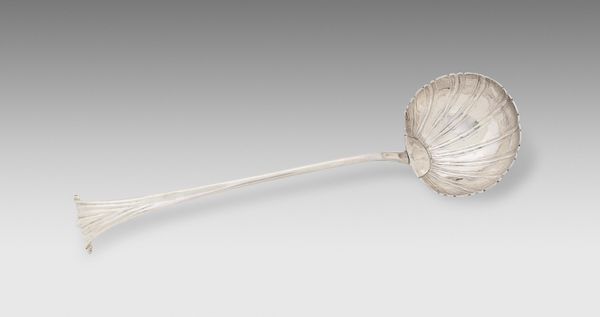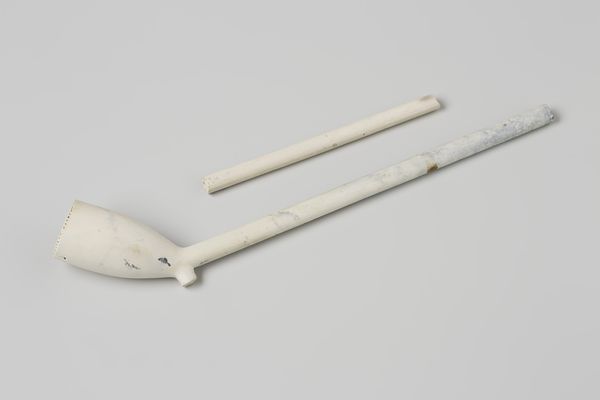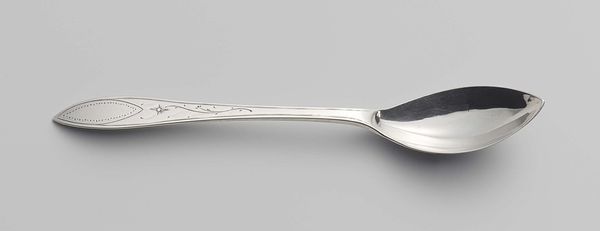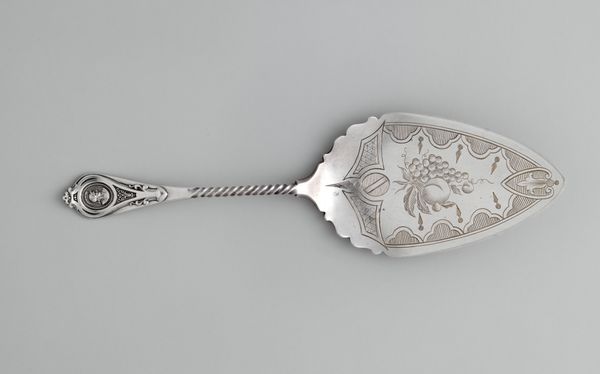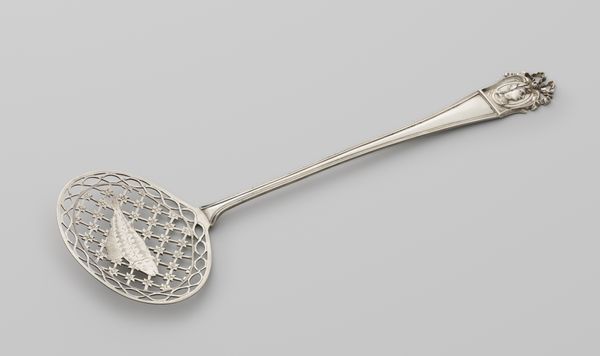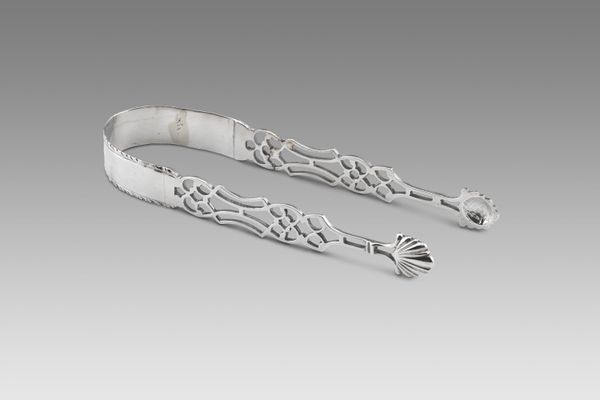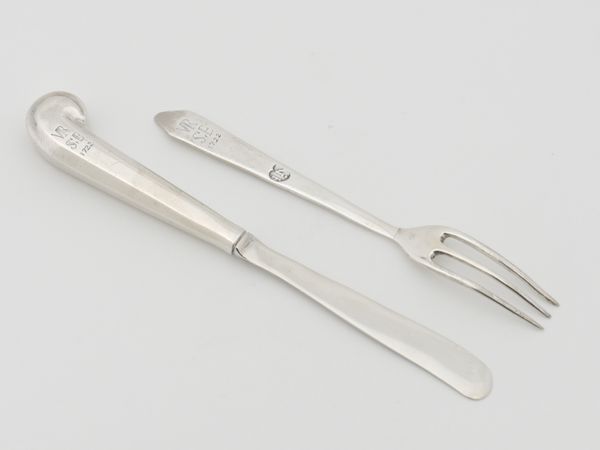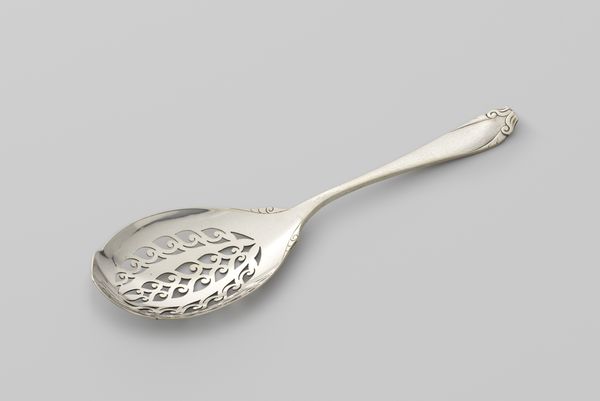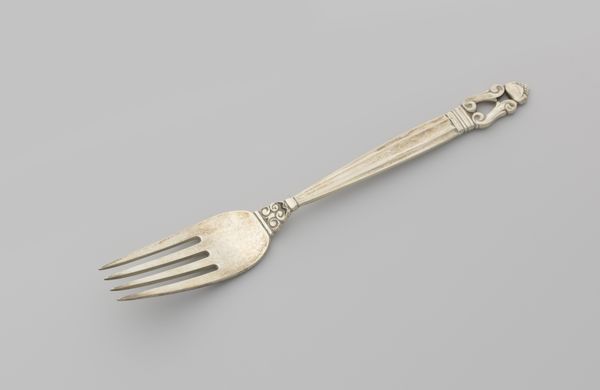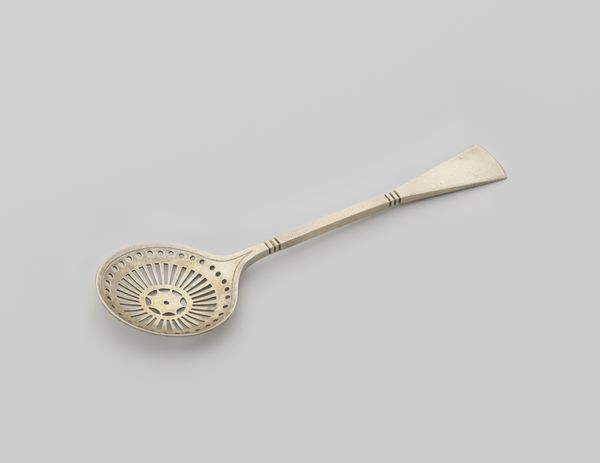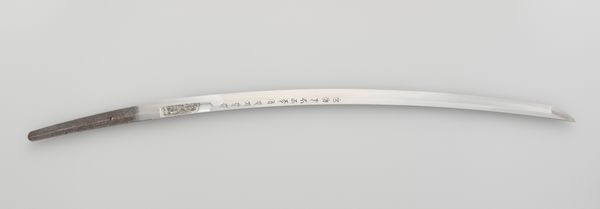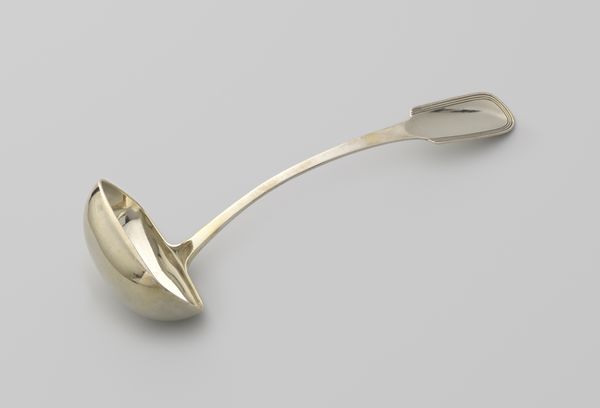
silver, metal, ink
#
silver
#
metal
#
ink
#
decorative-art
Dimensions: 2 × 15.9 × 6.7 cm (13/16 × 6 1/4 × 2 5/8 in.)
Copyright: Public Domain
Curator: Hello, and welcome. We're standing before a seemingly simple object, a pair of silver sugar tongs created by John Murdock, likely between 1779 and 1786. The work now resides here at the Art Institute of Chicago. Editor: My first impression is of delicate refinement, almost austere. The metal gleams, yet there’s a starkness to its functionality. The shape is quite elegant though, isn't it? Curator: Absolutely. Notice the linear elegance in the design—how the handles taper to these elliptical grips. It’s all about a controlled use of line, emphasizing purity of form. Also observe how light interacts with the polished silver surface, highlighting its cool tonality. Editor: But the decorative engraving adds a layer of complexity, softening the starkness with those floral motifs, wouldn't you say? That inscription—seemingly a monogram—speaks to ownership and privilege in the late 18th century. Imagine, these tongs once carefully portioned sugar, a commodity steeped in the history of colonization and enslaved labor. It adds a layer of meaning to the artifact, hinting at wealth and trade within the social landscape of the time. Curator: Yes, it interrupts that simplicity. Still, what’s striking about the overall construction is the reduction of form to its bare essentials. The tool exists only as its absolute, functional design—grasping and moving something granular—sugar—from one place to another. Decoration plays a supporting role in its design. Editor: It makes one wonder who DVM was and what this small luxury represented to them. For a contemporary audience, these objects offer insights into how historical legacies of trade, luxury, and identity intertwine in even the most everyday object. I suppose beauty can often be fraught, revealing both skill and unsettling aspects of the past. Curator: It certainly challenges us to see how seemingly minor works are designed and considered aesthetically during a particular moment. Thank you for joining us. Editor: Thank you.
Comments
No comments
Be the first to comment and join the conversation on the ultimate creative platform.
